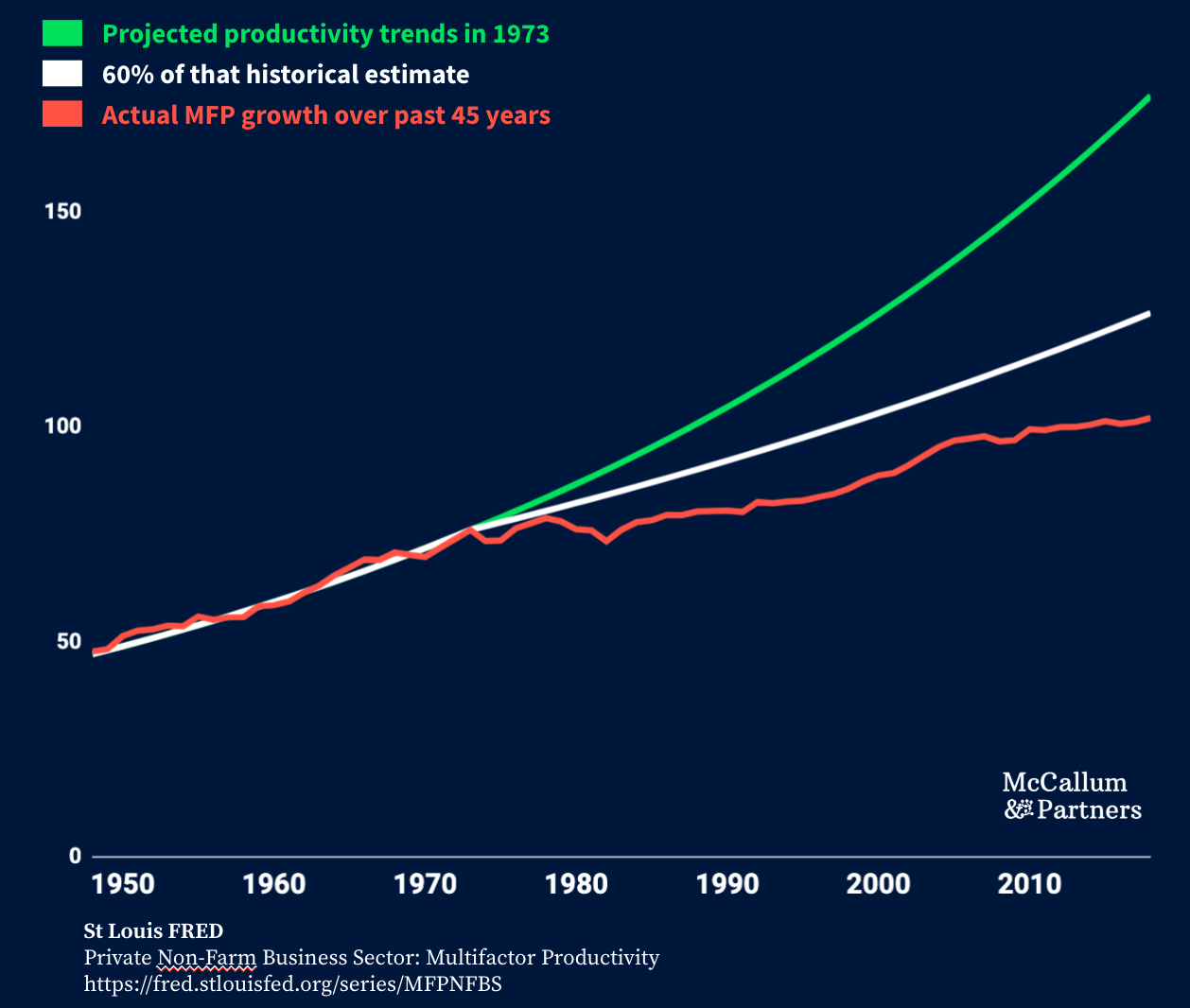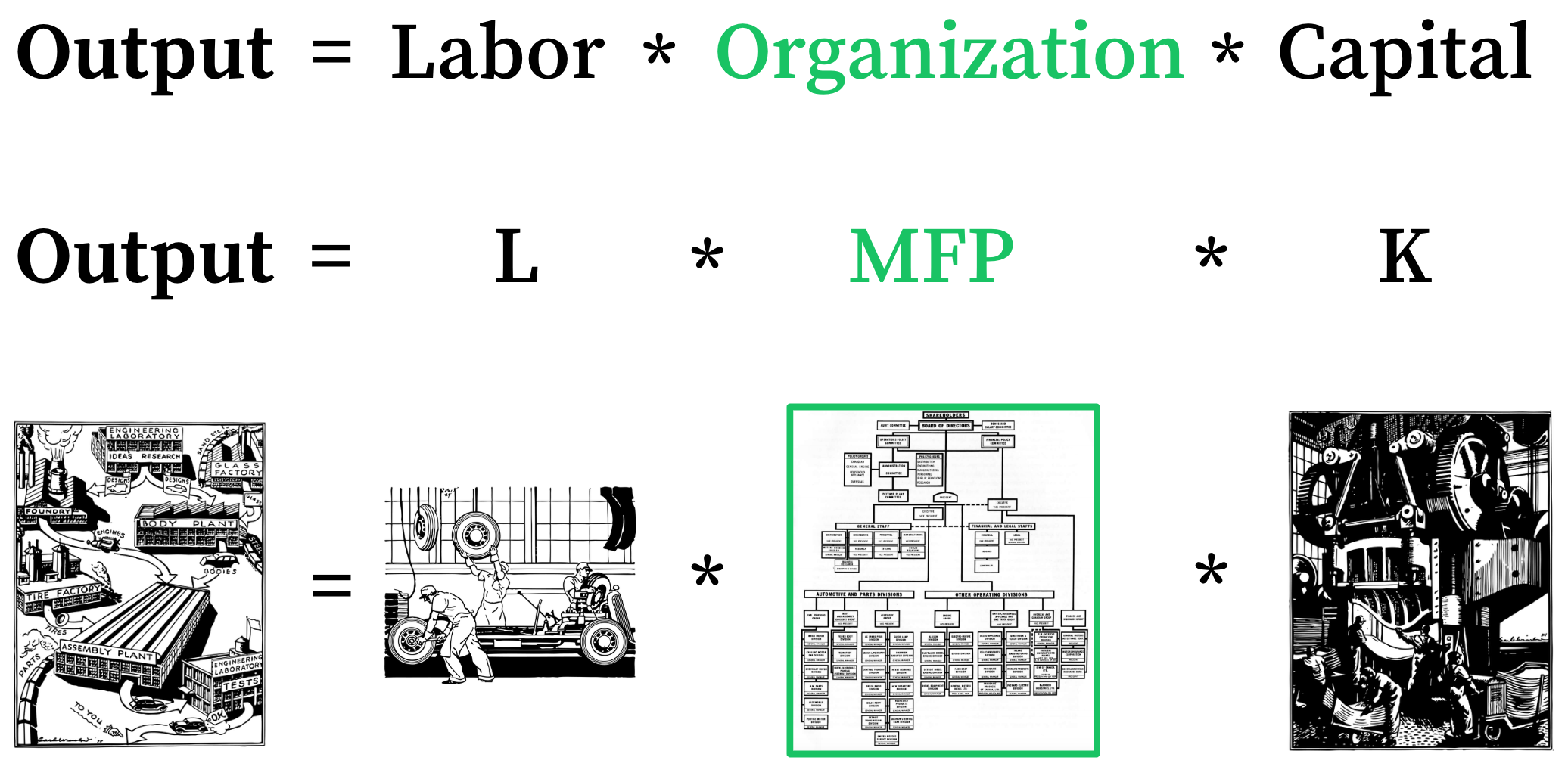"You can see robots everywhere except the productivity statistics."
Creating one pound of honey requires 10,000 bees to travel 75,000 miles and visit 8 million flowers. It is a feat of organization. So when foragers of nectar wander off, start slurring their messages, or drop dead miles away from home, it becomes an existential problem for the whole colony. Nectar deliveries stop. Production slams to a halt. The whole colony collapses. Half of the American bee population between 1947 and 2005 disappeared with this type of collaborative dysfunction.
The American economy has endured a similar phenomenon over the past 70 years. Despite incredible technologies emerging every day, employee engagement has dropped across all industries[1], corporations have experienced more turbulent performance[2], and it seems like everyone has developed endless-meeting-culture.[3].
Maybe you feel this tension too. You hear what’s possible with “AI” or the “cloud” but find yourself bogged down with clunky systems, conference calls, and round after round of gathering approvals. It hardly feels like the future when it takes an influence campaign and three applications to change some copy on your company’s website.
The dissonance is real. You aren’t delusional. We have proof.
Multifactor Productivity (MFP) tracks our ability to coordinate people and the tools they use. MFP climbs when we create more with less friction at work. MFP drops when managers build dysfunctional organizations or develop technologies that stifle employees.
America experienced the latter over the past 50 years. Robert Solow, a growth economist, spotted the trend in 1990, remarking that “you can see robots everywhere except the productivity statistics.” Most firms have struggled to apply the last several decades of innovation to their daily work.
Economists debate the details, but it is clear that executives are partly responsible. Managers have the final responsibility to hire staff and deploy tools. They also have the power to structure teams that coordinate the work of the whole organization.
It won’t matter if your employees are whip smart and dedicated to the work if they spend half their day copying and pasting. No software will fix incentives that pit teams against each other. Technology must serve the team and enable them to do their best, human-led, high-value work.
We think about this every day at McCallum & Partners. What types of technology automate the low-value work, so your team can focus on the real, big, thorny problems? What types of organization design reduce toxic dependencies? What historical examples of productive firms can serve as inspiration for the future?
We have some answers we would love to share with you and your team.
Give us a ring.


